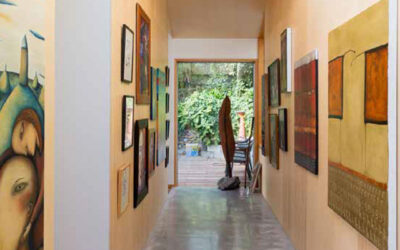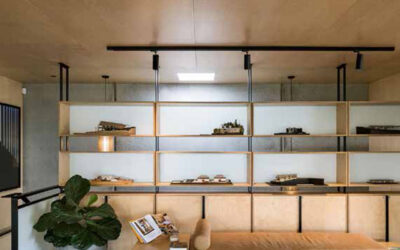1. Drywall is damaged during construction
2. Holes left for electrical boxes or access panels don’t match up
Even with careful measuring, this is a really common problem that crops up frequently – a hole is cut into the drywall sheet to go over an electrical box or allow access to wiring and when the drywall goes up, it doesn’t align. To circumvent this, sometimes installers will screw the drywall to the framing before trimming the opening, but often this just results in the drywall breaking around the box and then time needs to be spent repairing it.
To avoid all of that, we recommend employing the Fastmount panel mounting system, which involves a unique Centrepoint designed for every range, guaranteeing perfect alignment. Essentially the Centrepoint fits into the female clip installed into the substrate and marks the drill holes in the panel, so that you know exactly where to install the male clip. Check it out below:
3. The finishing screws cracked the drywall
The drywall is in, just the final touches to go…. then some overzealous drilling pushed the screws in too far and cracked the drywall. Or it popped out completely and now your sheet is bowed. This is one of those problems that can happen all too easily and delay your project unnecessarily. There are ways to repair it, but sometimes it’s more effective to avoid these mistakes altogether and rethink your strategy. Our clips are designed to be hidden behind the panel, so there’s no concern that your finished look will be damaged from hammering or drilling once the panel has been installed. The clips are robust and secure too (with pull out loads anywhere from 5kg to 30kg), so you can ensure a reliable result while maintaining a sleek finish.
4. Wear and tear over time
We’ve already addressed the fact that drywall is fragile and can easily tear and break, but the other concern is the movement of a structure over time. The natural expansion of wood framing means that slight shifting of many houses and buildings is inevitable and can result in drywall breakages – especially if the joints were too tight when installed. Fixing all the joints and other damage caused can be a massive job, possibly meaning a huge renovation project. One of the biggest benefits of using Fastmount is the removability factor. Because of the simple ‘click on, click off’ nature of the clips – panels can quickly and easily be removed to assess any damage control to drywall and begin repairs.
5. Uneven surface results in panels that aren’t level
As mentioned above, mounting panels over the top of your drywall is a great way to add some aesthetic to a room, and has the benefit of hiding any tears or holes that may have happened during construction. However, there’s a good chance that the walls you’re wanting to mount the panels on to aren’t straight and true. Often this isn’t something discovered until well after the initial build, and it affects the precision of panel installation. With our Stratlock Rail System you can still achieve perfect alignment of your panels. Once the framing is in place and clips attached, you have 360° adjustment of the panel before locking into place, allowing you to compensate for any irregularities with the wall itself and line your panels up perfectly.



